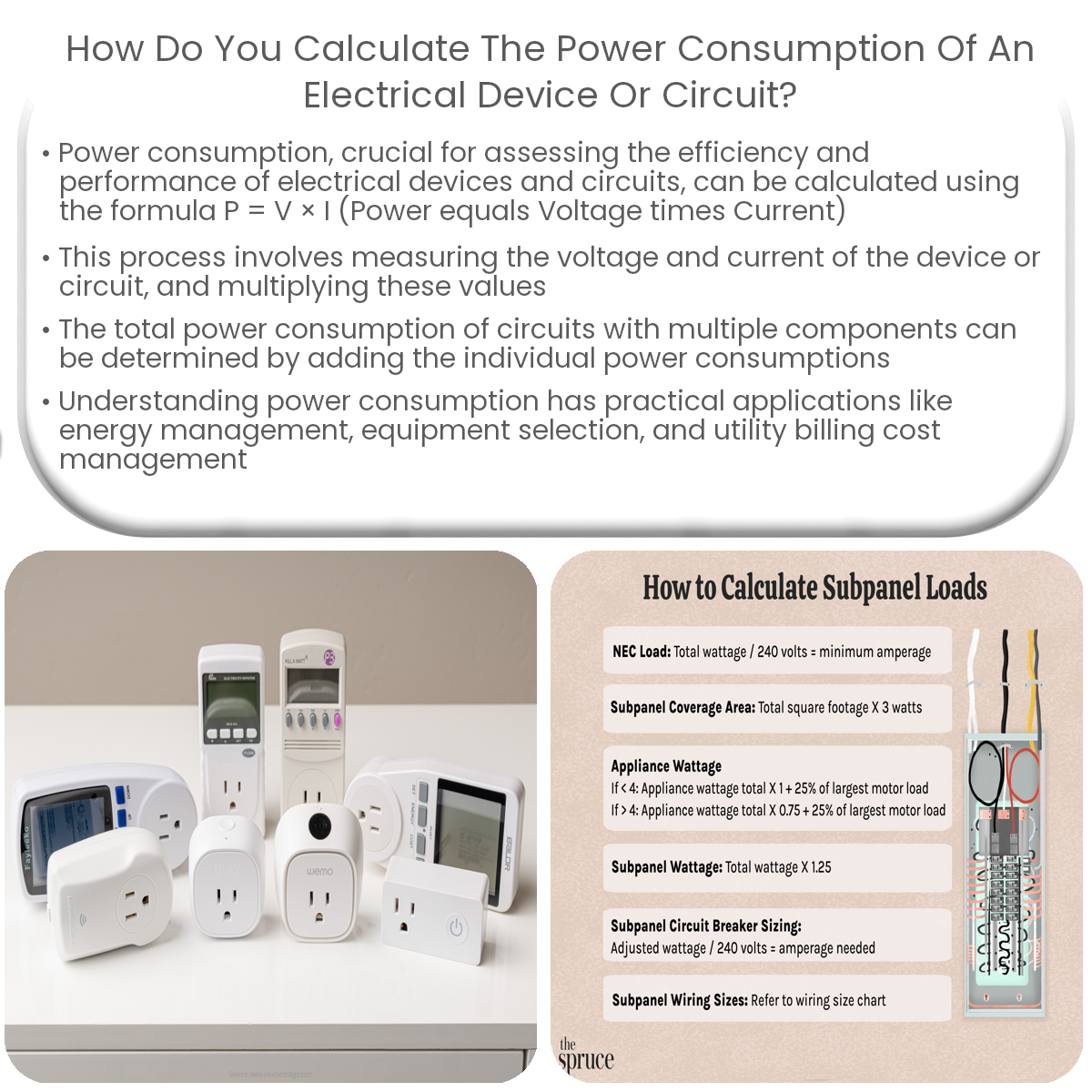To calculate power consumption, measure voltage (V) and current (I), then use the formula P = V × I to find power in watts (W).
Calculating Power Consumption of an Electrical Device or Circuit
Power consumption is a crucial factor in assessing the efficiency and performance of electrical devices and circuits. Knowing how to calculate power consumption can help individuals and organizations manage their energy usage, reduce costs, and make informed decisions about equipment selection. This article will explain the steps to calculate the power consumption of an electrical device or circuit.
Understanding Power
In electrical systems, power is the rate at which work is done or energy is transferred. It is measured in watts (W) and is typically calculated as the product of voltage (V) and current (I):
P = V × I
Power can also be expressed in terms of resistance (R) using Ohm’s Law:
P = I2 × R
Calculating Power Consumption
Follow these steps to calculate the power consumption of an electrical device or circuit:
- Measure the voltage (V) across the device or circuit. This can be done using a multimeter or by referring to the device’s specifications.
- Measure the current (I) flowing through the device or circuit. This can also be done using a multimeter or by referring to the device’s specifications.
- Calculate the power consumption (P) using the formula P = V × I. This will give you the power consumption in watts (W).
For circuits with multiple components, the total power consumption can be calculated by adding the individual power consumptions of each component.
Example: Calculating Power Consumption of a Light Bulb
Suppose you have a light bulb with a rated voltage of 120 volts and a rated current of 0.5 amperes. To calculate the power consumption of this light bulb, use the formula P = V × I:
P = 120 V × 0.5 A = 60 W
This means that the light bulb consumes 60 watts of power when it is turned on.
Practical Applications
Understanding how to calculate power consumption has various practical applications, including:
- Energy management: Knowing the power consumption of different devices can help individuals and organizations identify opportunities for energy savings and implement conservation strategies.
- Equipment selection: Accurate power consumption calculations can assist engineers and technicians in selecting the appropriate size and type of equipment for specific applications.
- Utility billing: Electricity providers bill customers based on their energy consumption, which is related to power consumption, making it essential to understand power consumption for cost management.
Conclusion
Calculating the power consumption of an electrical device or circuit is a crucial aspect of managing energy usage, optimizing performance, and making informed decisions about equipment selection. By following the steps outlined in this article and using the formula P = V × I, individuals and organizations can determine the power consumption of various electrical devices and circuits.


